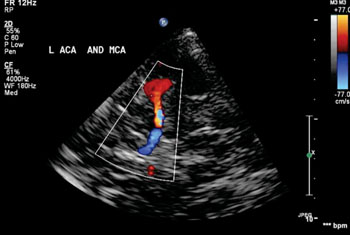New Approaches for Transcanial Ultrasound Used for the Treatment of Brain Tumors and Targeted Drug Delivery
By MedImaging International staff writers
Posted on 17 Aug 2014
A study completed by a Finnish researcher provides new insights into the limitations and potential new directions for the future advancement of transcranial ultrasound therapy. Active research is ongoing in this field, which potentially can be applied to the treatment of brain tumors and targeted drug delivery. Posted on 17 Aug 2014
The therapy modality has already been effectively applied to the treatment of neuropathic pain disorder and essential tremors. The benefits of transcranial ultrasound therapy include minimal invasiveness, because the treatment is delivered to the brain by transmitting ultrasound through the intact skull of the patient. The study focuses on two issues that may potentially restrict the applicability of transcranial ultrasound: skull-base heating and formation of standing-waves.
As the ultrasound beam encounters the skull bone, part of the beam’s energy is transferred into the skull as heat. In the study, it was found that the heating of the skull-base during transcranial ultrasound therapy can result in hazardous temperature elevations when the sonications are performed close to the skull-base. Three new approaches were developed in this study to counteract this potentially hazardous phenomenon.
However, standing waves are formed in the ultrasound field when waves reflect from the surface of the skull bone. During transcranial ultrasound therapy, the ultrasound amplitude can reach higher levels than intended if these reflections are not taken into account during the initial treatment planning. The study, a project that came out of a PhD thesis by Aki Pulkkinen, MSc, from the University of Eastern Finland (Joensuu), revealed that the formation of standing waves is greatly reduced when specifically designed large-area ultrasound transducers are used.
The study also introduces a model to numerically simulate clinical patient treatments performed with transcranial ultrasound therapy. The predictions produced by the model were compared to observations done in clinical patient trials performed earlier. The predictions were found to be of sufficient accuracy for an initial treatment planning. However, more accurate characterization of the acoustical and thermal parameters involved in transcranial ultrasound therapy is nonetheless required.
The Ph.D. thesis by Aki Pulkkinen, MSc, entitled Simulation Methods in Transcranial Ultrasound Therapy, is available online (please see Related Links below).
Related Links:
Simulation Methods in Transcranial Ultrasound Therapy
University of Eastern Finland
















